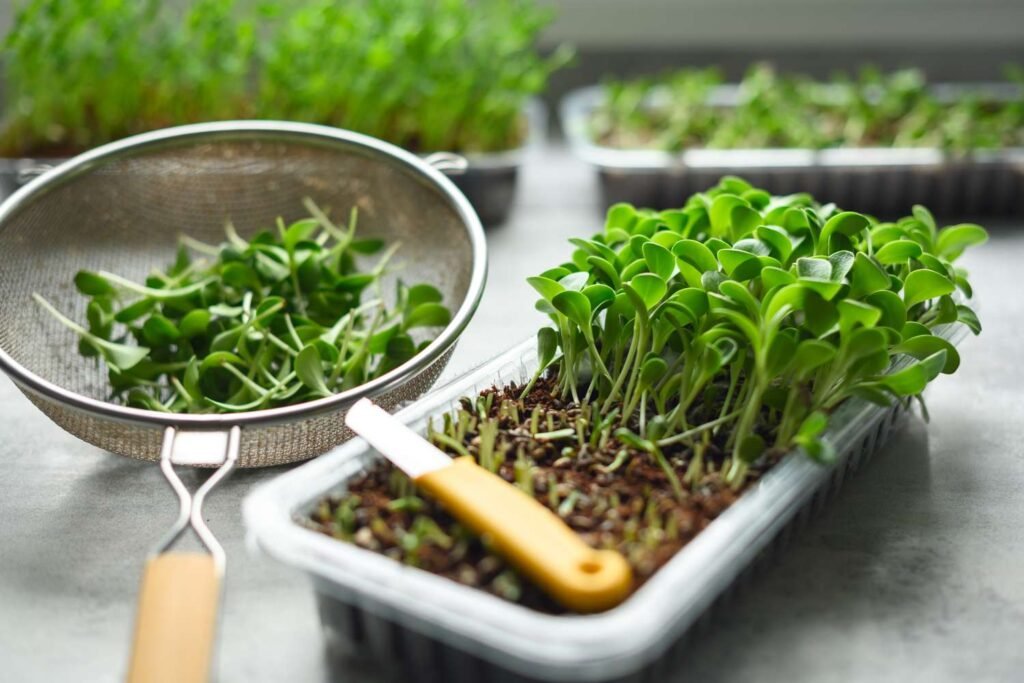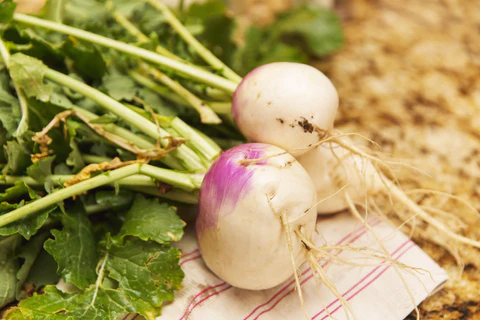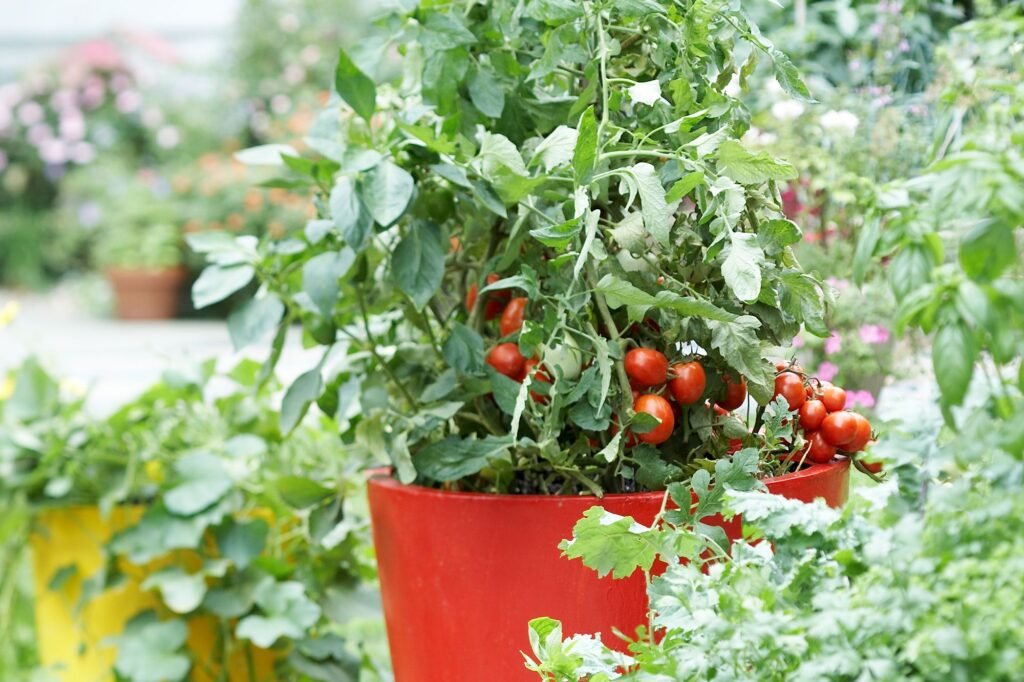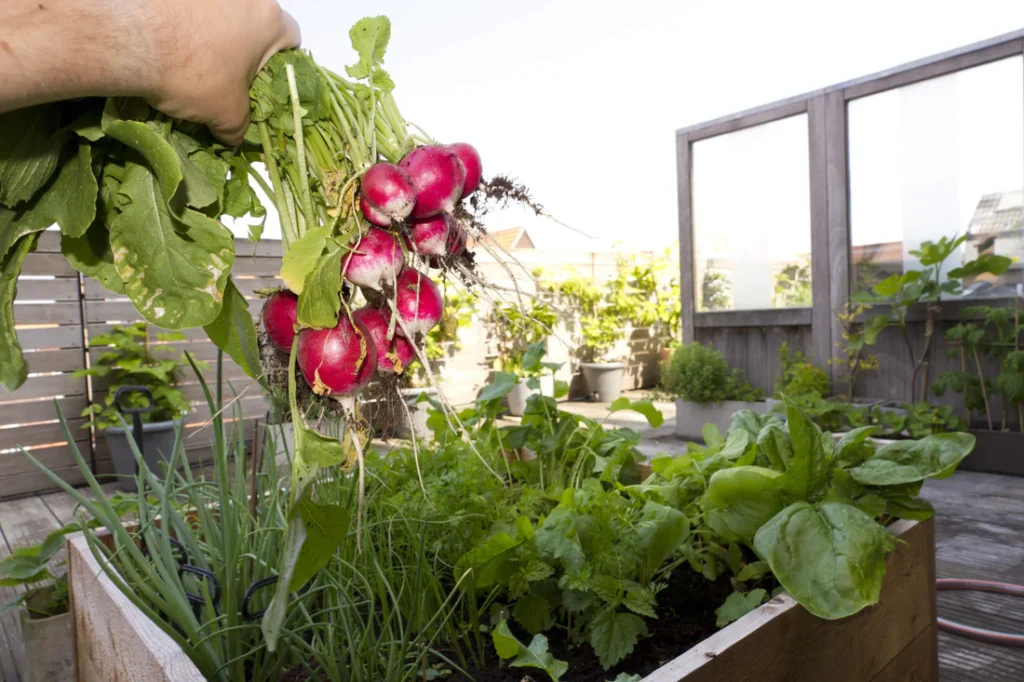In today’s fast-paced world, home gardeners often seek quick-yield crops that deliver fresh produce in minimal time. Growing fast-growing vegetables is not only rewarding but also encourages healthy eating habits and reduces the need for frequent trips to the grocery store. Vegetables that mature in under 30 days allow gardeners to enjoy multiple harvests in a single season, maximize small garden spaces, and experiment with indoor or container gardening.
In this guide, we’ll explore five fast-growing vegetables, their cultivation requirements, and tips for achieving rapid harvests while maintaining high yields and quality.
1. Radishes (Raphanus sativus)

Radishes are among the fastest-growing vegetables, often ready to harvest in 20–30 days. Their peppery flavor and crisp texture make them a staple in salads and garnishes.
- Growing Conditions: Radishes thrive in full sun with well-draining soil enriched with compost. They prefer cooler temperatures (50–70°F) and can be planted in early spring or fall.
- Planting Tips: Sow seeds directly into the soil about ½ inch deep, spaced 1 inch apart. Thin seedlings to 2–3 inches for optimal root development.
- Harvesting: Check for maturity frequently; roots grow rapidly. Pull when they reach 1 inch in diameter for the best flavor.
- Fast-Growth Strategy: Frequent harvesting encourages continuous production and prevents radishes from becoming woody or pithy.
Extra Tip: Plant successive batches every week for a steady supply of fresh radishes.
2. Lettuce (Lactuca sativa)

Leafy lettuce varieties, especially loose-leaf types, can be harvested within 25–30 days, making them ideal for fast salads.
- Growing Conditions: Lettuce prefers cool weather, partial shade, and consistently moist soil. Nutrient-rich, loose soil promotes rapid growth.
- Planting Tips: Sow seeds ¼ inch deep and thin seedlings to 4–6 inches apart.
- Harvesting: Harvest outer leaves as they grow, allowing inner leaves to continue developing. This “cut-and-come-again” method extends the harvest period.
- Fast-Growth Strategy: Keep soil evenly moist and fertilize lightly to accelerate leaf production.
Extra Tip: Pair with taller vegetables like carrots or bush beans for companion planting that maximizes garden space.
3. Spinach (Spinacia oleracea)

Spinach is another quick-growing leafy green that thrives in cool weather and can be harvested in 25–30 days for baby leaves.
- Growing Conditions: Prefers full sun to partial shade and moist, well-draining soil. Regular watering supports fast growth.
- Planting Tips: Sow seeds ½ inch deep and space 2–3 inches apart. Thin seedlings to 4–6 inches to avoid overcrowding.
- Harvesting: Pick young leaves for the most tender and flavorful results. Mature leaves may take longer but are perfect for cooked dishes.
- Fast-Growth Strategy: Frequent harvesting of outer leaves encourages continuous production and prevents bolting in warmer weather.
Expert Insight: Growing spinach in containers allows gardeners to control soil and water conditions more effectively, promoting faster growth.
4. Green Onions / Scallions (Allium fistulosum)

Green onions, also known as scallions, are fast-growing alliums that can be harvested in 20–30 days for their tender shoots.
- Growing Conditions: They thrive in full sun with fertile, well-drained soil. Regular watering ensures consistent growth.
- Planting Tips: Sow seeds thinly in rows or containers. You can also propagate from leftover root ends for a continuous supply.
- Harvesting: Snip green tops as needed; roots can continue producing new shoots.
- Fast-Growth Strategy: Green onions are ideal for successive sowing every 10–14 days for a continuous harvest.
Extra Tip: Green onions are perfect for indoor herb gardens or windowsill containers, allowing year-round harvests.
5. Arugula (Eruca vesicaria)

Arugula, a peppery leafy green, grows rapidly and can be ready for harvest in 20–25 days. Its unique flavor makes it popular in salads, sandwiches, and garnishes.
- Growing Conditions: Prefers cool temperatures, partial shade, and well-draining soil rich in organic matter.
- Planting Tips: Sow seeds ¼ inch deep and thin seedlings to 3–4 inches apart. Rows can be spaced 8–10 inches for optimal growth.
- Harvesting: Harvest young leaves for tender texture and milder flavor. Larger leaves may be more pungent but still suitable for cooking.
- Fast-Growth Strategy: Frequent harvesting prevents bolting and encourages continuous production.
Expert Insight: Like lettuce and spinach, arugula responds well to “cut-and-come-again” harvesting, maximizing yield from limited space.
Tips for Growing Vegetables Fast
- Use Quality Soil: Well-draining, nutrient-rich soil accelerates root and leaf growth.
- Adequate Sunlight: Most fast-growing vegetables require 6–8 hours of sunlight daily for optimal growth.
- Consistent Watering: Keep soil evenly moist but avoid waterlogging to prevent root diseases.
- Fertilization: Light feeding with balanced or compost-based fertilizer encourages rapid growth.
- Succession Planting: Sow seeds every 1–2 weeks for a continuous harvest throughout the season.
- Container Gardening: For small spaces, containers allow precise control of soil, water, and temperature, enhancing growth speed.
- Temperature Management: Cool-season crops like lettuce, spinach, and arugula grow faster in cooler temperatures; consider shading or indoor planting during hot months.
Benefits of Fast-Growing Vegetables
- Quick Gratification: Perfect for beginner gardeners or those seeking instant results.
- Multiple Harvests: Allows multiple plantings per season, increasing total yield.
- Nutritional Value: Freshly harvested vegetables retain more nutrients than store-bought produce.
- Sustainable Gardening: Encourages homegrown food and reduces reliance on commercial produce.
- Space Efficiency: Fast-growing vegetables can fit in small gardens, raised beds, or container setups.
Expert Insight: By focusing on fast-growing crops, gardeners can maintain a continuous supply of fresh greens and vegetables, even in small urban spaces.
Common Challenges and Solutions
- Leggy Growth: Ensure sufficient sunlight or supplement with grow lights.
- Pests: Aphids, slugs, and leaf miners can damage crops; use organic pest control methods.
- Bolting: Leafy greens may bolt in hot weather; provide shade and consistent water to delay flowering.
- Crowding: Thin seedlings to prevent competition for light, water, and nutrients.
- Overwatering: Can cause root rot; water deeply but infrequently and allow soil to partially dry between watering.
Pro Tip: Observe plants closely and respond quickly to stress signs for the fastest harvests.
Conclusion
Growing fast-growing vegetables is a rewarding and practical approach to home gardening. By planting crops like radishes, lettuce, spinach, green onions, and arugula, gardeners can enjoy fresh, nutritious produce in under 30 days.
Key Takeaways:
- Choose fast-maturing varieties suited to your growing conditions.
- Use nutrient-rich, well-draining soil and maintain consistent watering.
- Provide ample sunlight or supplemental lighting indoors.
- Harvest regularly to encourage continuous growth and prevent bolting.
- Utilize succession planting to maintain a steady supply of fresh vegetables.
With careful planning, any gardener—beginner or experienced—can achieve quick, abundant harvests, maximizing space and creating a sustainable, flavorful, and nutrient-rich food source. Fast-growing vegetables are perfect for urban gardens, container setups, or indoor growing, ensuring that fresh produce is always within reach.
